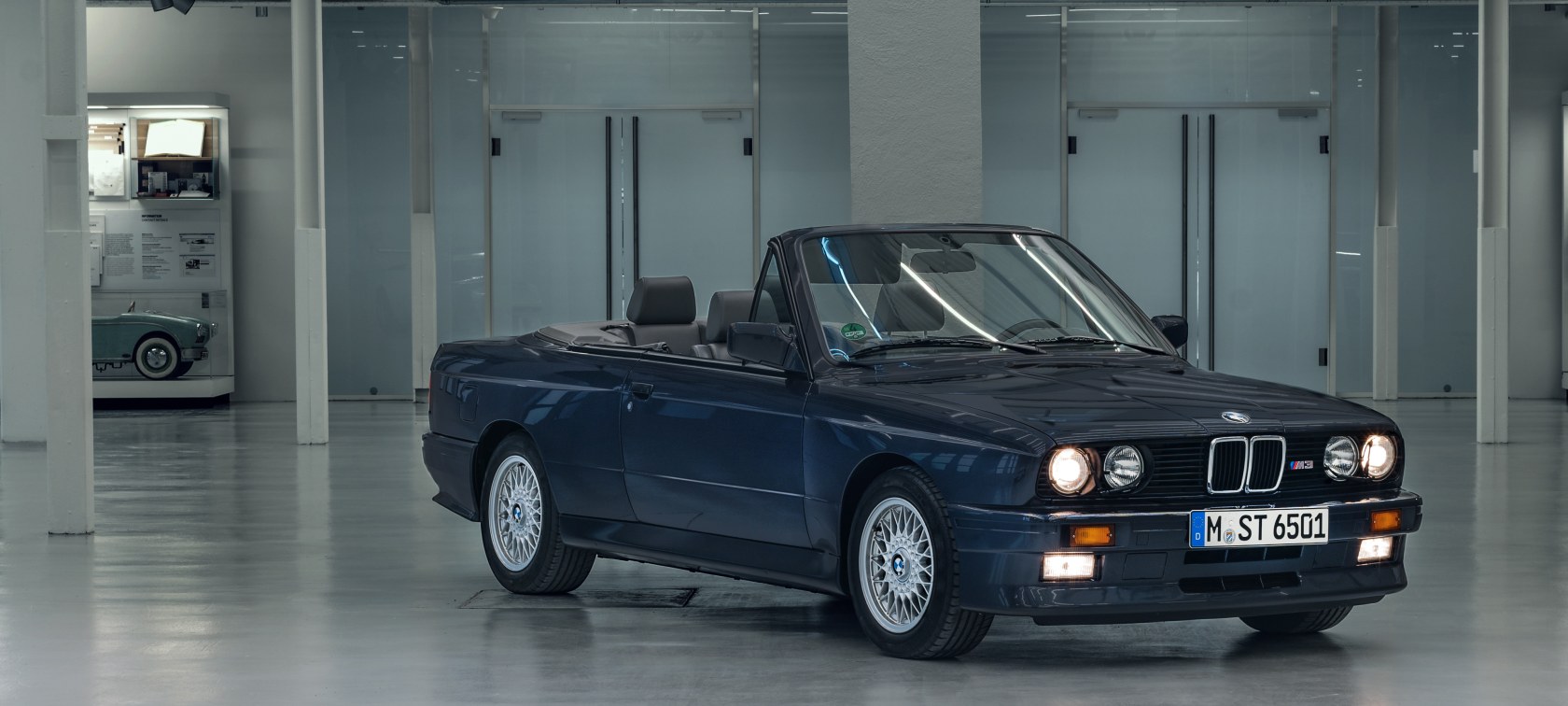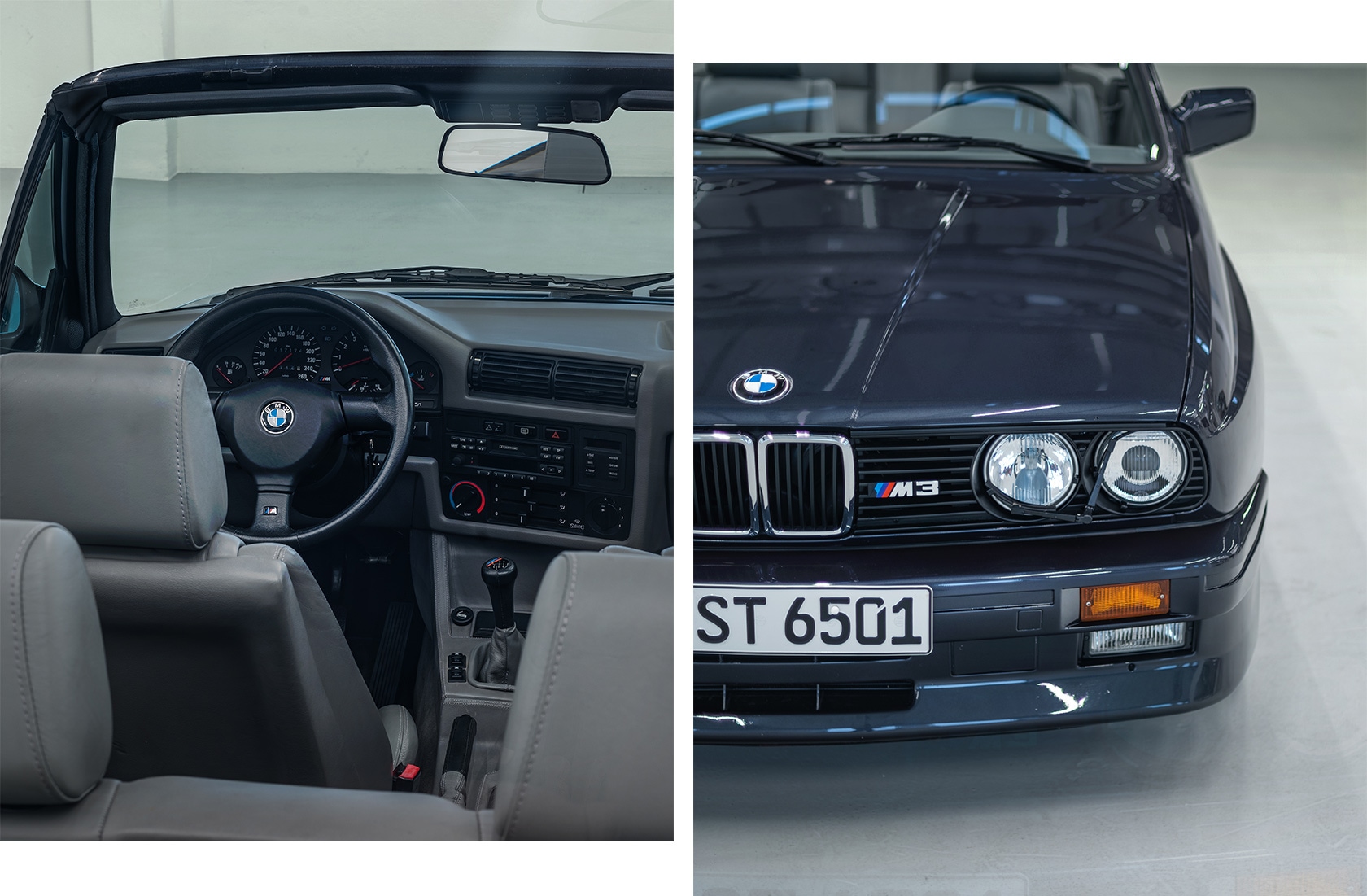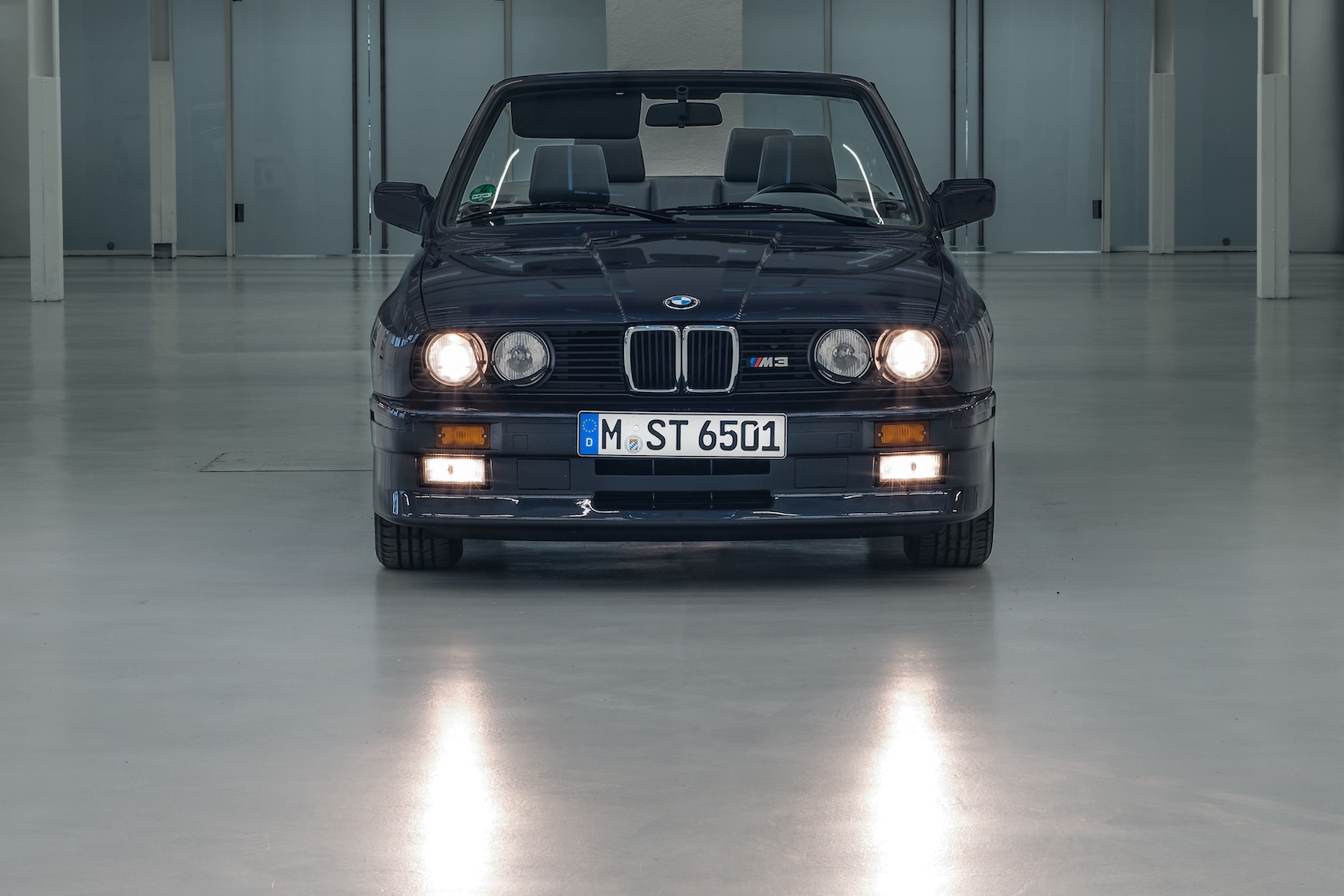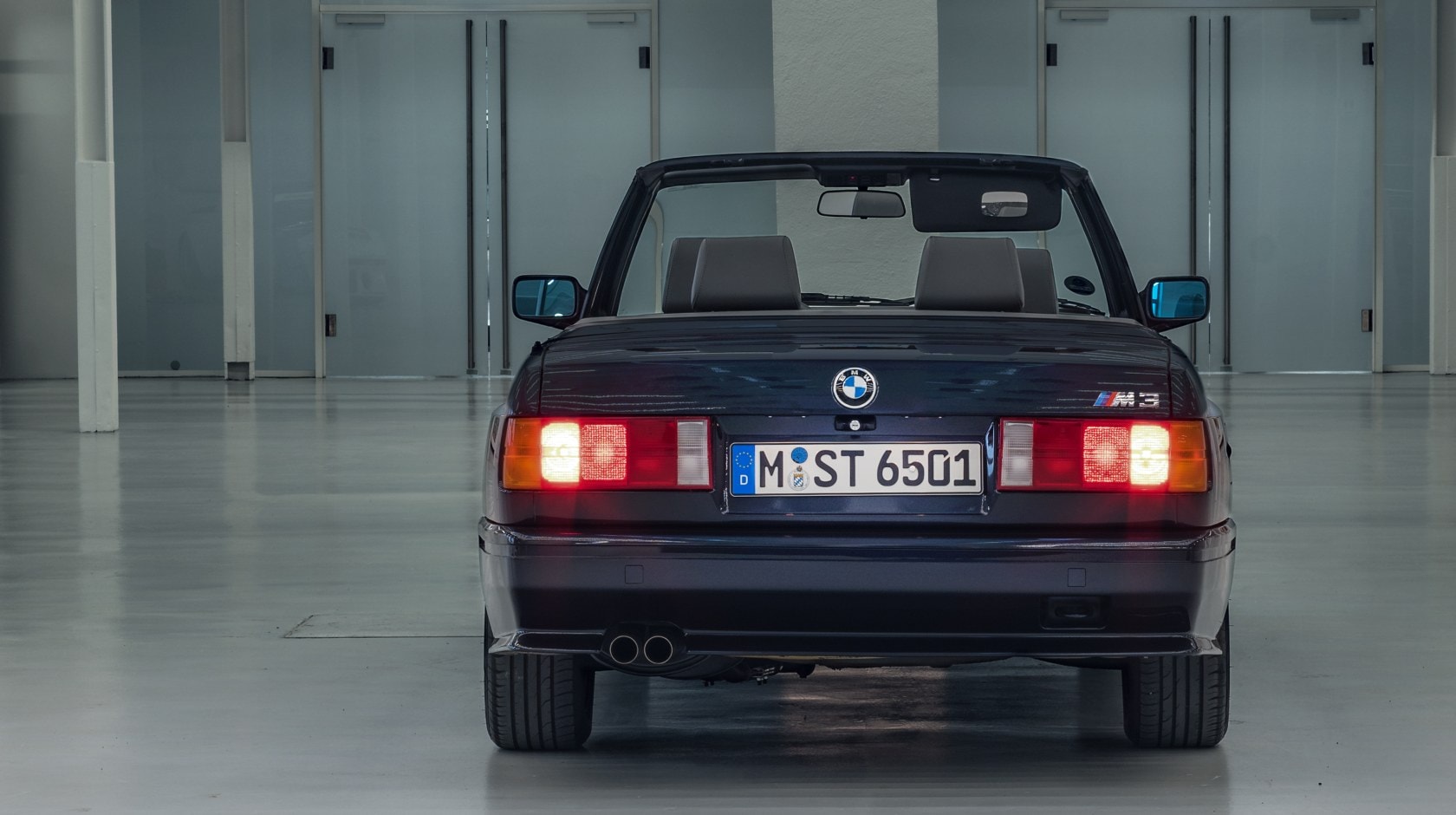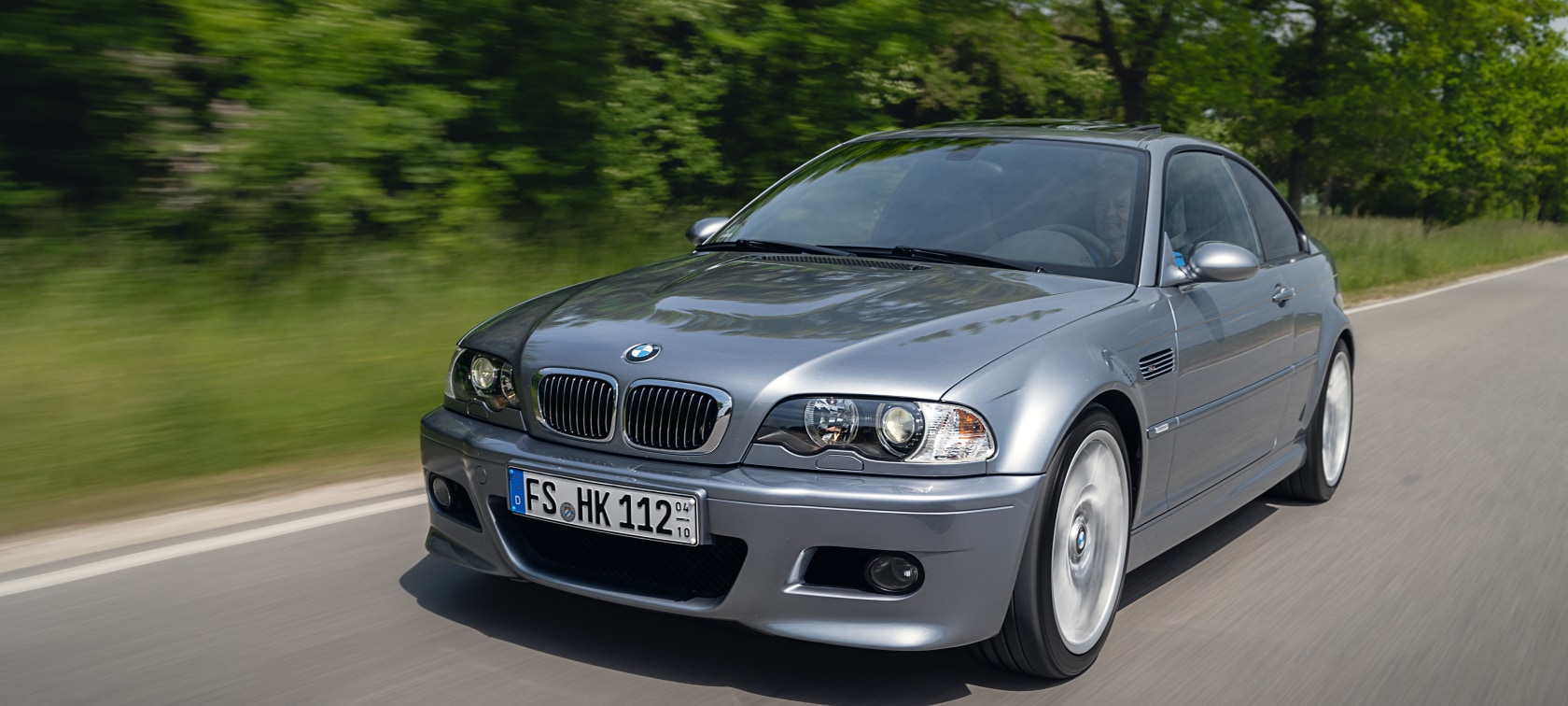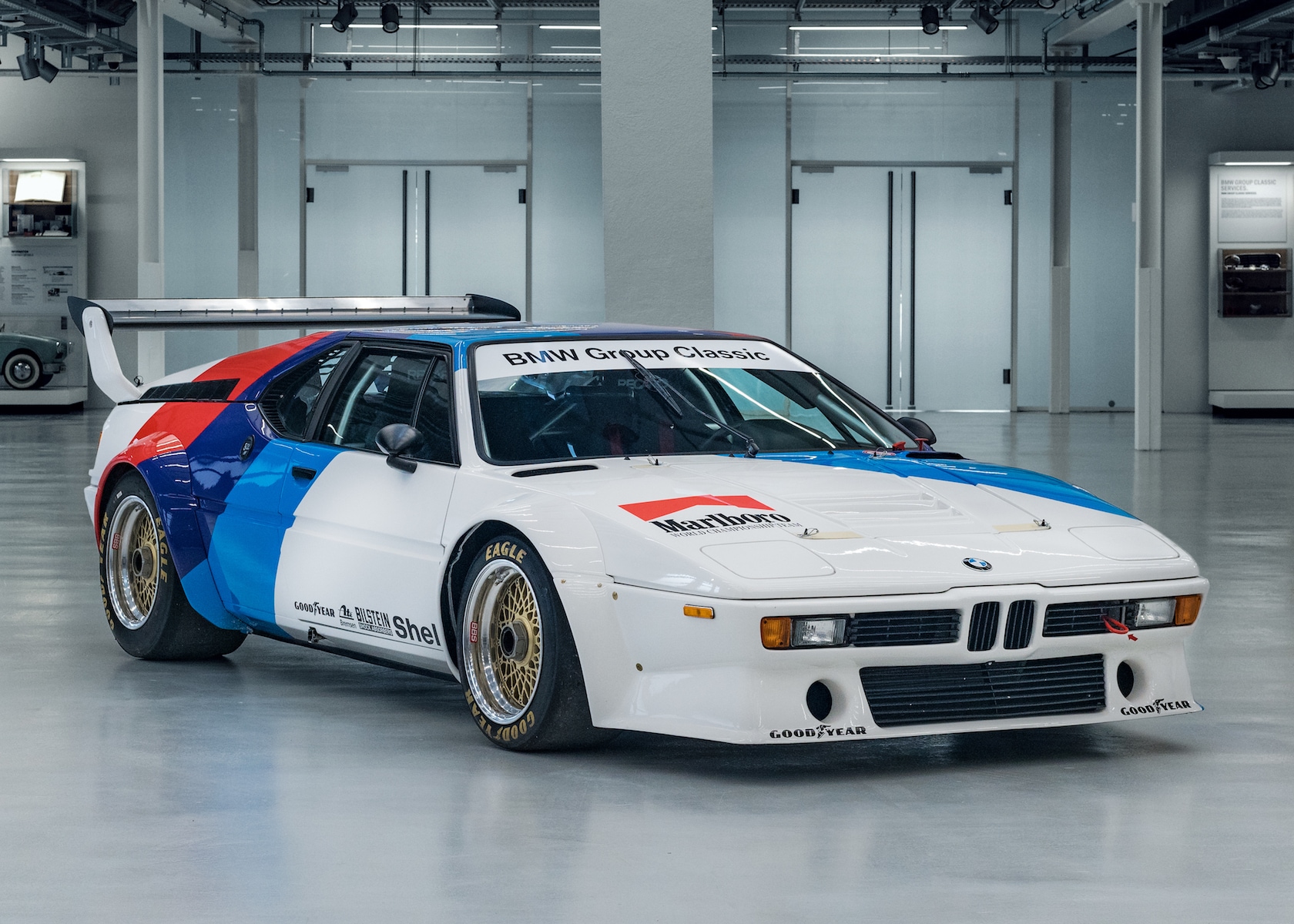If there’s one model in the history of BMW M that is representative of all convertibles of the brand, it is the BMW M3 E30 Convertible. BMW M’s first mass-produced vehicle with a fabric roof, it embodies the symbiosis of high performance and luxurious convertible driving like no other car made in the 1980s. Today, this iteration of the M3 E30 is a rare and sought-after classic.
5 POWERFUL FACTS:
- First convertible in M history
- Only 786 units built
- Convertible with world champion DNA
- 0-100 km/h in 7.5 seconds
- 195 to 215 hp peak power
MOTORSPORT AT ITS HEART.
The BMW M3 E30 wasn’t really planned. It came into being thanks to a particular Group A motorsport regulation that meant that in order to homologate its M3 racing model for touring car championship events, BMW M also had to build 5,000 units of a road-legal version. During the initial development of the first M3 touring car, successful performances were the baseline that M engineers had hoped to achieve. But they did even better than that, with successful performances turning into championship wins in its very first season in competition.
That came in 1987, when Belgian driver Erik van de Poele won the overall DTM title in the M3, while it also helped propel German Winfried Vogt to European Touring Car Championship title glory. The crowning achievement that year was the inaugural World Touring Car Championship title by captured by Italian Roberto Ravaglia behind the wheel of an M3. The M3 dominated that series from start to finish, and a motorsport legend was born. As a result, the 5,000 planned road-legal versions were quickly sold and BMW M, realising it had a hit on its hands, quickly moved to cater to demand. This included the creation of rare special edition models such as the BMW M3 Evolution, the BMW M3 Cecotto, the BMW M3 European Champion signed by Ravaglia and, of course, the BMW M3 Convertible.
FROM WORLD CHAMPIONSHIP RACETRACKS TO THE OPEN ROAD.

FROM WORLD CHAMPIONSHIP RACETRACKS TO THE OPEN ROAD.
Like the two-door sedan, the M3 E30 Convertible is derived from motorsport, combining high performance and open-top decadence in a way that had never been seen before. After all, the M3 E30 was the only DTM homologation model that was also available in a convertible version. The first BMW M3 was as at home on a country road as it was on the racetrack – something that is still characteristic of all BMW M cars today. Only one feature was missing: the ability to feel fresh mountain air rushing over you whilst cruising through the Alpine passes. The Convertible brought both features together at its market launch in 1988.
M MOTION – THE ENGINE.
The E30 engine, with its wide, milled cylinder head, spark plug connectors arranged in line and M Power lettering on decorative stripes, is testament to the BMW M engineers' attention to detail. On the other hand, the water-cooled 4-cylinder in-line unit, with its compact design, 16-valve light alloy head, two overhead camshafts and a five-bearing crankshaft, bear witness to its proximity to motorsport. And so it should – the 2.3-litre engine is a derivative of the Formula 1 engine that propelled Nelson Piquet to become world champion in 1983. Initially, the M3 Convertible developed 195 hp and reached a top speed of 228 km/h. In the summer of 1989, another 20 hp was added and the top speed rose to 239 km/h. At the time – and compared to the competition – this was outstanding performance for a four-seater convertible.

6,97 kg/hp: At launch, the M3 E30 Convertible produced 195 hp yet weighed in at just 1360 kilograms. In 1988, this was an impressive power-to-weight ratio for four-seater convertibles, and it still guarantees incomparable driving pleasure today.
THE GEARBOX.

THE GEARBOX.
Closely linked to motorsport: The gearshift dynamics of the BMW M3 E30 Convertible are another indicator of its proximity to motorsport. First gear is located on the lower left of its H gearstick, creating a performance advantage of having shorter shifting distances between second and fifth gear.
THE INTERIOR: DESIGNED FOR SPORTY DRIVING.
Typical of BMW and of BMW M, the cockpit is optimally aligned to the driver, with the centre console angled towards them. The M3 E30 Convertible’s interior was designed for maximum control and dynamics. In addition to the M Technic leather sports steering wheel, the driver is supported by M Sport seats with adjustable thigh support and precisely fitting side bolsters, even when cornering at speed. First-time owners had a choice of three interior colours: black, silver and natural, in fabric or leather. Those who opted for the optional leather upholstery could also fine-tune the interior and have the door, side panels and centre tunnel upholstered with fine Walk Nappa.
CONVERTIBLE ON TOP, RACING CAR UNDERNEATH.
Without the large rear spoiler, M3 E30 Convertible is more discreet than its two-door sedan sibling. Otherwise, it has the same motorsport-inspired flourishes, especially the muscular wheel arches that clearly distinguish the M3 Convertible from a regular BMW E30. This was a case of form following function – wider wheels and a larger track width were the actual reasons for its striking wheel arches, rather than just conveying a powerful appearance. The M engineers also reached deep into their bag of tricks in other respects. Plastic mudguards, boot lids, spoilers and bumpers all contribute to the low curb weight. The self-supporting all-steel body, which is welded to the car’s floor, provides the BMW M3 E30 Convertible with greater rigidity.
EXTREMELY RARE, HIGHLY COLLECTIBLE.
Only 786 units of the BMW M3 E30 Convertible were produced. This means that the most powerful production E30 convertible of all time is also one of the rarest E30 vehicles ever. And as the first convertible from BMW M, it has taken its place in history and become a sought-after classic.

